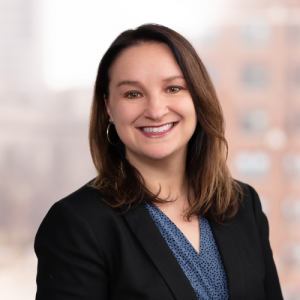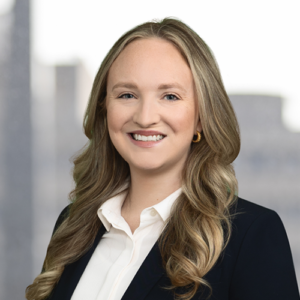On November 2, 2021, the Centers for Medicare & Medicaid Services (“CMS”) released the calendar year (“CY”) 2022 Outpatient Prospective Payment System (“OPPS”) and Ambulatory Surgical Center (“ASC”) Payment System final rule (“Final Rule”). Simultaneously, CMS released its CY 2022 Medicare Physician Fee Schedule (“MFPS”) final rule. Below is a high-level summary of the major changes established in the OPPS Final Rule. For further detail on the MPFS final rule, please refer to our client alert available here.
Significant provisions of the OPPS/ASC Final Rule include:
2022 OPPS Rates, ASC Rates and 2019 Data Used
CMS will increase OPPS and ASC payment rates by a net of 2.0 percent for CY 2022.
To set CY 2022 OPPS and ASC payment rates, CMS would normally use the most updated claims and cost report data available. However, the CY 2020 claims data included services furnished during the COVID-19 PHE, which significantly affected outpatient service utilization. As a result, CMS is generally utilizing CY 2019 data to set CY 2022 OPPS and ASC payment rates.
Price Transparency Penalties
In an effort to increase compliance with price transparency, CMS increased the monetary penalty it can impose on hospitals that do not comply with price transparency beginning January 1, 2022. Specifically, The CMP amount for noncompliance with price transparency will be based on the hospital’s number of beds:
- For hospitals with < 30 beds: a maximum daily dollar CMP amount of $300
- For hospitals with 31-550 beds: a maximum daily dollar CMP amount calculated as the number of beds times $10
- For hospitals with > 550 beds: a maximum daily dollar CMP amount of $5,500
Additionally, a hospital must ensure that the published standard charge information is easily accessible to automated searches and direct file downloads through a link posted on a publicly available website.
Inpatient Only List and Two-Midnight Rule
CMS halted the elimination of the Inpatient Only List (“IPO list”) and reinstated the majority of the services removed in CY 2021. Additionally, CMS chose to codify the five longstanding criteria for determining whether a service or procedure should be removed from the IPO list by including the criteria in the regulation text. Finally, CMS will exempt procedures that are removed from the IPO list beginning on or after January 1, 2022, from site-of-service claim denials, Beneficiary and Family-Centered Care Quality Improvement Organization referrals to Recovery Audit Contractors (“RACs”) for persistent noncompliance with the Two-Midnight rule and RAC reviews for “patient status” (that is, site-of-service) for a time period of two years.
340B
For CY 2022, CMS will continue the current policy of paying an adjusted amount of ASP minus 22.5 percent for drugs and biologicals acquired under the 340B program. Rural sole community hospitals, PPS-exempt cancer hospitals, and children’s hospitals will continue to be exempt from this 340B payment policy.
Site-Neutral Payment
As discussed in a previous article, under Section 603 of the Bipartisan Budget Act of 2015 (“Section 603”), off-campus hospital provider-based departments (“PBDs”) (as defined under 42 CFR § 413.65), established before November 2, 2015, are considered “excepted” or “grandfathered” for purposes of payment under OPPS. However, off-campus PBDs established on or after November 2, 2015, are considered “non-excepted.” Since 2017, Medicare pays for hospital outpatient services rendered at non-excepted PBDs based on the “applicable payment system” which currently is approximately 40 percent of the OPPS payment amount. The Final Rule does not address payment for non-excepted PBD, indicating that these locations will continue to be paid at 40 percent of OPPS.
As discussed in a previous article, in CY 2019, CMS reduced payment for evaluation and management (“E/M”) services (as described by HCPCS code G0463) at all off-campus PBDs, even when provided at excepted PBDs. In the Final Rule, CMS stated that it will continue this policy to pay 40 percent of OPPS for G0463 for CY 2022 and beyond.
Quality Report (“QR”) Updates
CMS finalized both Hospital Outpatient QR and ASC QR Program changes that will impact payment determinations for future calendar years. Failure to submit the required data metrics incurs a 2.0 percentage point reduction to the reimbursement received by the provider under the applicable fee schedule. Among other changes, both the Hospital Outpatient QR and ASC QR updates:
- Adopt new reporting requirements about COVID-19 vaccination coverage among health care personnel; and
- Restart the Outpatient and Ambulatory Surgery Consumer Assessment of Healthcare Providers and Systems Survey-based measures on a voluntary basis in CY 2023 and mandatory basis in CY 2024.
ASC Covered Procedures List (“CPL”) Criteria
Starting in CY 2022, CMS is reinstating the ASC CPL criteria for adding surgical procedures to the ASC CPL in effect in CY 2020. The reinstated criteria uses the general standards specified in § 416.166(b) and not excluded under the general exclusion criteria specified in § 416.166(c). This reverses the significantly revised criteria for adding surgical procedures adopted in CY 2021 based on CMS’s subsequent reevaluation of the safety of performing those surgical procedures on typical Medicare beneficiaries.
Payment Policy for Non-Opioid Pain Management Drugs and Biologicals Under Section 6082 of the SUPPORT Act
Pursuant to the Secretary’s statutory obligation to conduct a review of opioid and non-opioid alternative payments to ensure there are no financial incentives to use opioids instead of non-opioid alternatives, CMS has finalized criteria for identifying applicable non-opioid alternatives eligible for payment, which requires drugs to (i) be FDA approved; (ii) be FDA indicated for pain management or as an analgesic, and (iii) have a per-day cost above the OPPS drug packaging threshold to be eligible for payment. Pursuant to this criteria, beginning January 1, 2022, CMS will pay for four (4) non-opioid pain management drugs separately in the ASC setting as surgical supplies.
Partial Hospitalization Program Rate Setting
The Final Rule updates the geometric mean per diem payment rates for structured intensive outpatient mental health services furnished in hospital outpatient departments and Community Mental Health Centers (“CMHCs”). To stabilize payments and continue to support Medicare beneficiaries’ access to PHP services during COVID-19, CMS set rates for CMHCs and hospital outpatient PHPs at a cost-floor of $136.14 and $253.76, respectively, instead of the lower calculated geometric mean per diem. In rate setting for these PHP services, CMS used claims data from CY 2019 due to the substantial decrease in PHP days in the CY 2020 claims data set.
Radiation Oncology Model
CMS has finalized proposals and modified the design of the delayed CMMI Radiation Oncology Model, which is officially set to begin its five-year model performance period on January 1, 2022. Under the Model, Medicare will pay participating providers and suppliers (physician group practices, hospital outpatient departments and freestanding radiation therapy centers) a site-neutral, partially prospective, episode-based payment for specified professional and technical radiotherapy services furnished during a 90-day episode to Medicare FFS beneficiaries diagnosed with certain cancer types. In its final proposal, CMS includes an Extreme and Uncontrollable Circumstances policy, tailored to the specific circumstances of affected geographic areas, that permits CMS flexibility to respond to circumstances, such as the COVID-19 PHE, that impact participants’ ability to deliver care to beneficiaries. Notably, participation in the model is mandatory for providers furnishing radiotherapy services in the Participating Zip Codes unless the provider is otherwise excluded under the Rule.
Hall Render attorneys are currently analyzing the Final Rule and will issue specific content as it develops.
If you have questions, please contact:
- Regan Tankersley at (317) 977-1445 or rtankersley@wp.hallrender.com;
- Lauren Hulls at (317) 977-1467 or lhulls@wp.hallrender.com;
- Kathryn Costanza at (303)-801-3534 or kcostanza@wp.hallrender.com;
- Lisa Lucido at (248)-457-7812 or llucido@wp.hallrender.com;
- Kaitlin Nucci at (248) 457-7838 or Knucci@wp.hallrender.com; or
- Your primary Hall Render contact.
Hall Render blog posts and articles are intended for informational purposes only. For ethical reasons, Hall Render attorneys cannot—outside of an attorney-client relationship—answer specific questions that would be legal advice.




